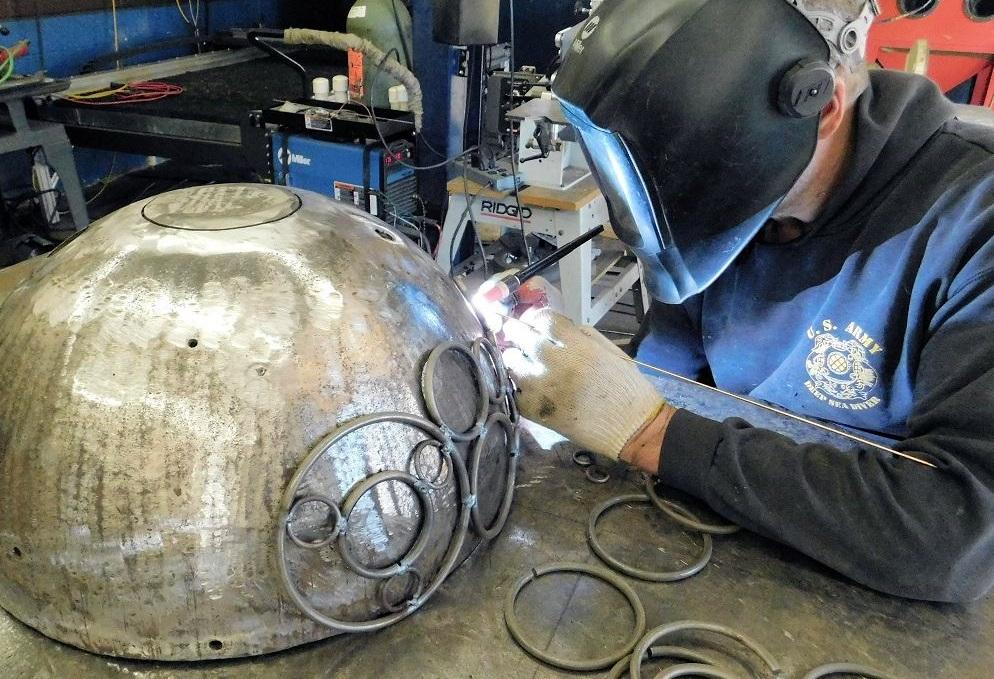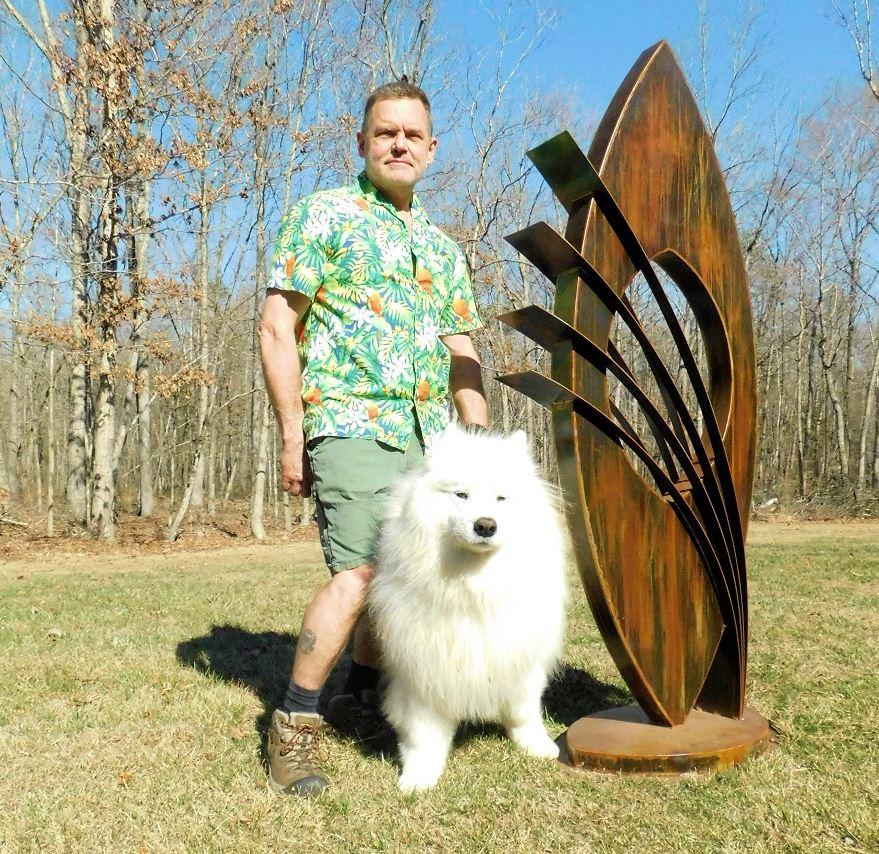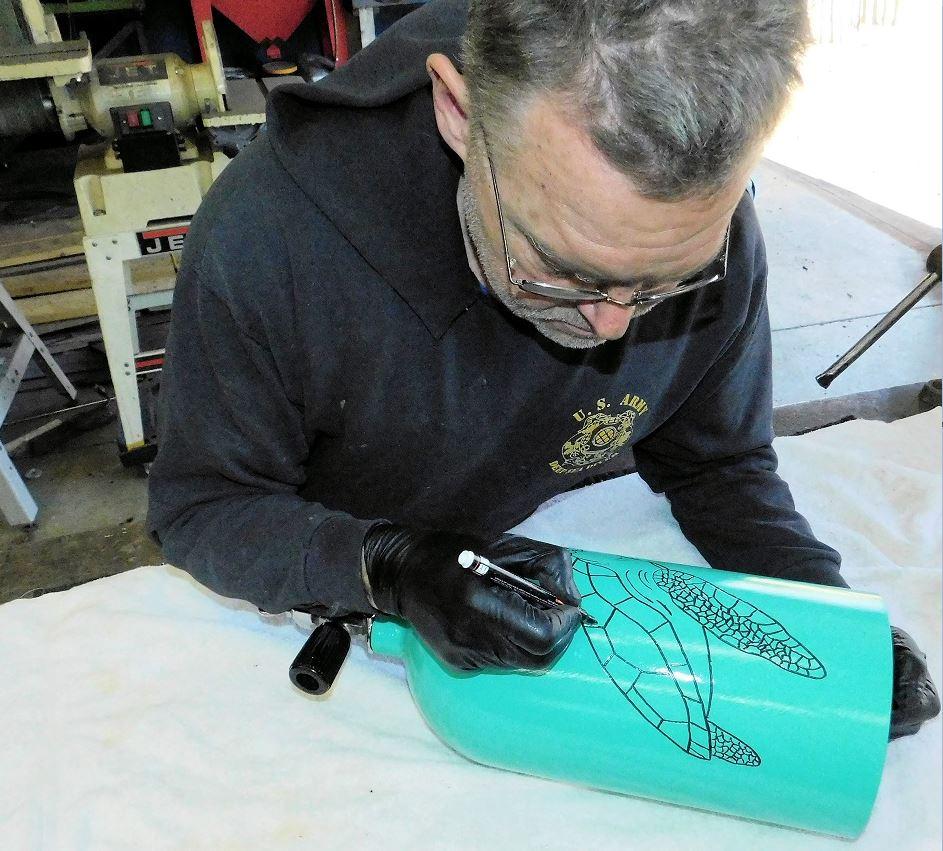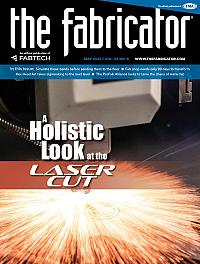Senior Editor
- FMA
- The Fabricator
- FABTECH
- Canadian Metalworking
Categories
- Additive Manufacturing
- Aluminum Welding
- Arc Welding
- Assembly and Joining
- Automation and Robotics
- Bending and Forming
- Consumables
- Cutting and Weld Prep
- Electric Vehicles
- En Español
- Finishing
- Hydroforming
- Laser Cutting
- Laser Welding
- Machining
- Manufacturing Software
- Materials Handling
- Metals/Materials
- Oxyfuel Cutting
- Plasma Cutting
- Power Tools
- Punching and Other Holemaking
- Roll Forming
- Safety
- Sawing
- Shearing
- Shop Management
- Testing and Measuring
- Tube and Pipe Fabrication
- Tube and Pipe Production
- Waterjet Cutting
Industry Directory
Webcasts
Podcasts
FAB 40
Advertise
Subscribe
Account Login
Search
Former U.S. Army diver dives into the fine art of metal sculptures
PSA Custom Creations of Virginia has nautical roots in its metal art
- By Tim Heston
- May 19, 2023
- Article
- Arc Welding

Pat Andrews of PSA Custom Creations welds a ring design onto the base of what will become an outdoor sculpture.
When Patrick Andrews wields a gas tungsten arc welding torch, guides sheet metal through a slip roll, or looks at an unadorned base of what will soon become a whimsical outdoor sculpture, he enters a serious state of quiet focus.
“I go back to my diving experience, my career in the Army and in fabrication. I apply those same skills to art. Diving for the Army, we might be in the middle of nowhere, and we had to improvise with what was on hand. Regarding leadership, in the Army we were taught to look at the whole person and develop them into what they can become. Now, as an artist, I look at a piece and I ask, ‘What can it become?’”
Andrews has lived a life worthy of a reality TV show. In fact, he was on reality TV, on two episodes of Discovery’s “Junkyard Wars,” when he and his teammates scavenged through junk to cobble together a vehicle sturdy enough to drive up a nearby mountain. “What everyone did in 10 hours was just amazing,” he recalled, describing the odds and ends of golf carts and the guts of a totaled Suzuki they found. What can it become? A kick-butt 4x4, that’s what.
This was in 2003, when Andrews was a U.S. Army diver. It’s an exclusive group. Out of the Army’s half-million active-duty service members, only about 130 are divers.
They’re not just trained to weld, but weld underwater. In 1989, Andrews attended the Naval Diving and Salvage Training Center, which conducts dive training for all the service branches. He described it as a “crash course” on the intricacies of underwater welding and thermal cutting. The aim isn’t to become AWS certified but instead act as the first line of defense. “Army divers perform battlefield damage and repair,” Andrews said. “If, say, a bridge or dam is damaged, we’ll act quickly and patch it.” Once the necessary patches are made and the environment is safe and secure, Army divers hand off the job to others. Training focuses on following robust processes that help identify problems. They think quickly yet completely, weighing the challenges of the moment. What does this become? Then, they move forward with a solution.
“When you dive and weld underwater, you need to work with the inherent risks,” Andrews said. “You could do everything right, then something seemingly minor happens. Your body could be fine diving today, and tomorrow, if you’re slightly dehydrated and something goes wrong and you stay down a little too long, you can have tunnel vision and even black out. As a supervisor, you need to know when something goes wrong [with a fellow diver]. You talk them through it, and describe, ‘Here’s what you’ll do in order to recover, and here’s how we’ll treat you on the surface.’”
Andrews retired from the Army more than a decade ago and formally launched his art studio, PSA Custom Creations, in 2012. “I started welding pieces and parts together and, quite frankly, I wasn’t very good at it. It was your basic yard art. But I’m glad I did it. It helped me refine my techniques and develop a unique style.”
Part of that style involved sections of cut and engraved scuba tanks, as well as a cut scuba tank made into a bell, which today remains one of his best sellers. “I’ve probably sold 1,300 bells in the past 12 years,” Andrews said, “and 250 bells last year alone. And because I have a CNC plasma table with a [rotary axis] for cutting pipe, I’m able to cut designs into the cylinders quickly.”
Designing in CAD and exporting to the CNC table is quite the step up from manual cutting, though he still engraves a fair number of tanks by hand. Still, not every equipment upgrade at Andrews’ Goldvein, Va., studio has been conventional. Andrews pointed to his 16-ga., 36-in. slip roll, a manual machine that once had a hand crank.
“I bought it used, and I realized that forming by hand was for the birds. I needed three hands, two to hold the material and one to turn the hand crank. I thought, ‘I need to figure out a way to power this,’ so I made these little power adapters.”
The adapter is simple, an octagon with a square hole. To use it, he simply replaces the hand crank with the adapter (which he now sells through his website), then attaches a pipe threader power tool with a foot pedal. “This way, I’m able to feed material in and, instead of making just straight curves, I can form the workpiece into various spirals and abstract shapes.”
Instead of dealing with the status quo—be it a manual slip roll with limited capabilities or (as an Army diver years ago) an underwater repair challenge, even training a new Army recruit back in the day—Andrews looks at the challenge in front of him. What could this become? He looks at the entire situation, considers all angles, improvises along the way, and moves forward with that moment’s best possible solution.
You might think a retired Army diver would see metal art as a relaxing, creative outlet after a stressful career. For Andrews, art might be relaxing, but he doesn’t pursue it passively. That’s just not in his nature. He’s still active in the diving community and never hesitates to pass on what he learned in the Army.
Even at the studio, he approaches art with a consider-all-angles style. If clients order a custom piece, he visits their house, asks questions, and determines where the piece will sit (inside or outside) and how natural and artificial light will hit the piece at various times a day.
What will this become? He then heads back to the studio, chooses the raw materials, makes a few drawings, considers all angles—then dives in.
About the Author

Tim Heston
2135 Point Blvd
Elgin, IL 60123
815-381-1314
Tim Heston, The Fabricator's senior editor, has covered the metal fabrication industry since 1998, starting his career at the American Welding Society's Welding Journal. Since then he has covered the full range of metal fabrication processes, from stamping, bending, and cutting to grinding and polishing. He joined The Fabricator's staff in October 2007.
subscribe now

The Fabricator is North America's leading magazine for the metal forming and fabricating industry. The magazine delivers the news, technical articles, and case histories that enable fabricators to do their jobs more efficiently. The Fabricator has served the industry since 1970.
start your free subscription- Stay connected from anywhere

Easily access valuable industry resources now with full access to the digital edition of The Fabricator.

Easily access valuable industry resources now with full access to the digital edition of The Welder.

Easily access valuable industry resources now with full access to the digital edition of The Tube and Pipe Journal.
- Podcasting
- Podcast:
- The Fabricator Podcast
- Published:
- 04/30/2024
- Running Time:
- 53:00
Seth Feldman of Iowa-based Wertzbaugher Services joins The Fabricator Podcast to offer his take as a Gen Zer...
- Industry Events
Pipe and Tube Conference
- May 21 - 22, 2024
- Omaha, NE
World-Class Roll Forming Workshop
- June 5 - 6, 2024
- Louisville, KY
Advanced Laser Application Workshop
- June 25 - 27, 2024
- Novi, MI
Precision Press Brake Certificate Course
- July 31 - August 1, 2024
- Elgin,

































